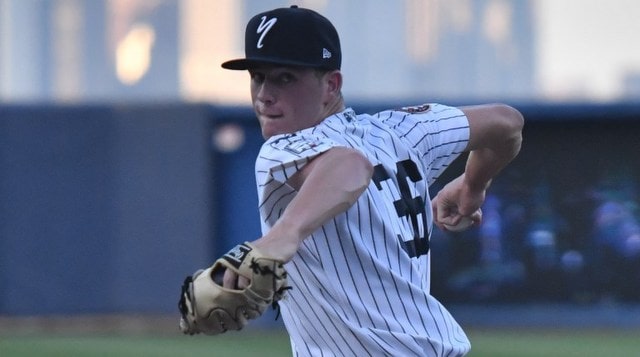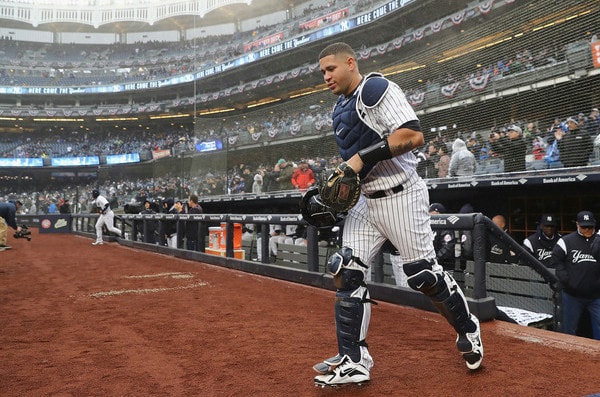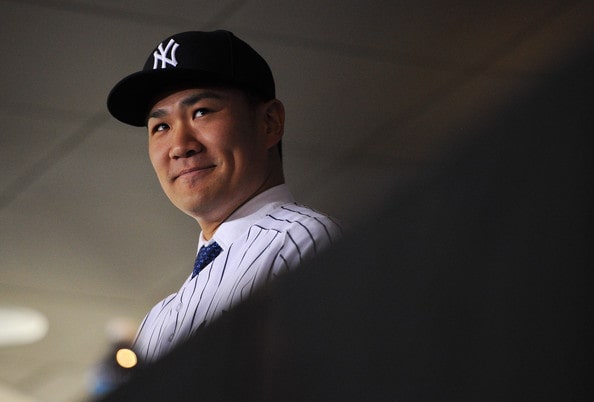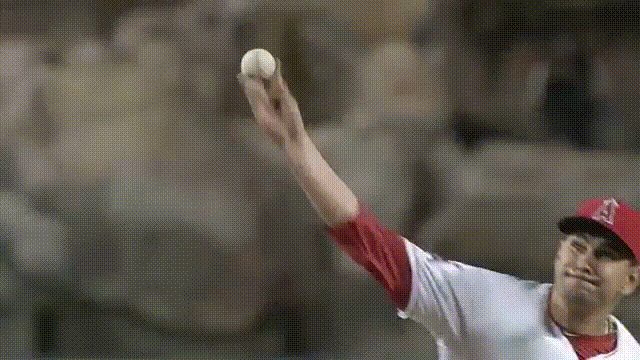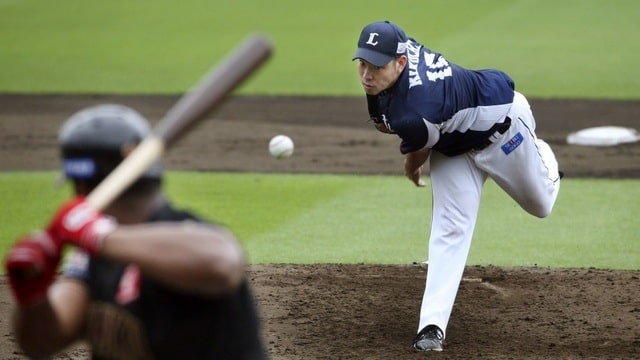
Earlier this week the Yankees made a big name depth pickup by agreeing to a one-year deal with Troy Tulowitzki. Because the Blue Jays owe him $38M the next two years, the Yankees only have to pay him the $555,000 league minimum. The Blue Jays probably won’t contend in 2019, but gosh, Tulowitzki getting a big hit against the Blue Jays on Toronto’s dime would be some Grade-A trolling.
Anyway, Tulowitzki is a big name and not much more at this point. Sure, we’ve all seen the “he looked great at his recent workout” stories these last few weeks, but we see those about countless players every offseason. Who’s the last player who had a bad workout? Exactly. The fact of the matter is Tulowitzki has not played in an MLB game since July 2017, and, when he did last play, he wasn’t very good. This is nothing more than a league minimum roll of the dice.
Reports indicate the Tulowitzki signing won’t stand in the way of a Manny Machado signing, and why would it? You don’t let anyone stand in the way of a Manny Machado signing, especially not a 34-year-old reclamation project who hasn’t played in 18 months. I reckon Tulowitzki won’t stand in the way of anything. If another good middle infield option comes along, the Yankees will pounce, and sort out the roster later. The more good players, the better.
Two weeks ago I tried to dig up some under-the-radar bullpen targets using skills the Yankees value, specifically spin rate and swing-and-miss rate. The Yankees love relievers who can spin the ball and miss bats. Every team does, but the Yankees especially. In last week’s chat, commenter PJ suggested I do something similar for position players, and seeing how the Yankees are set pretty much everywhere except the middle infield, that’s the place to look.
What skills do the Yankees value in hitters? The skills that led them to Luke Voit: Exit velocity and launch angle. They love hitters who hit the ball hard and hit the ball in the air. This past season the Yankees had the fourth highest average exit velocity (89.0 mph) and ninth lowest ground ball rate (41.6%) in baseball. Three-hundred-and-forty-four players batted at least 400 times from 2017-18. Their hard hit and ground ball rates:

The red dots are Yankees. The blue dots are everyone else. There are 22 red dots in the plot and I count eleven that are either in the “lots of hard fly balls” quadrant or very close to it. And you know what? Most of the eleven that aren’t are gone. Those players aren’t on the team anymore. The red dots in the “lots of weak grounders” quadrant include Starlin Castro, Chase Headley, Matt Holliday, and Ronald Torreyes. (Torreyes is the red dot at the bottom.)
Hitting the ball hard and hitting the ball in the air are two qualities the Yankees value in their hitters. How else do you think they set a new Major League home run record in 2018? There is more to being a position player than hitting the ball hard — defense matters too, for example — but I figure hitting the ball hard in the air consistently is a good starting point for a potential under-the-radar target search.
Last season 448 players received at least 100 plate appearances. Only 139 of those 448 players combined an above-average hard hit rate with a lower than average ground ball rate, and most of those 139 are the game’s best players. Aaron Judge, Mike Trout, Paul Goldschmidt, etc. Also, not many of them are middle infielders. A few are though, and some of them are available as free agents. Others could be trade targets. Here are five who caught my eye.
SS Nick Ahmed, Diamondbacks
- Hard Hit Rate: 39.2%
- Ground Ball Rate: 40.8%
- 2018 Slash Line: .234/.290/.411 (84 wRC+)
- 2019 Steamer Projection: .237/.294/.382 (72 wRC+)
The skinny: The Yankees have had interest in Ahmed in the past, and the D’Backs are selling, so he figures to be available. The 28-year-old does his best work in the field — he’s a stellar defensive shortstop — and last season he cranked a career high 16 homers. Not surprisingly, his hard contact rate ticked up and his ground ball rate ticked down.

“I’m trying to do damage every time I go up there. I’m not trying to buy into this, really, launch angle, high fly ball, home run-or-nothing approach,” said Ahmed to Kevin Zimmerman in August. Maybe he wasn’t trying to become a launch angle guy, but that’s what he became, and as a result he had his best offensive season to date. Of course, he was still a below-average hitter overall, but a sub-.300 OBP with 16 homers is better than a sub-.300 OBP with single-digit homers.
Contract status: Ahmed has two years of team control remaining and MLBTR projects a $3.1M salary in 2019. Like I said, the D’Backs are in selling mode now, so I’m certain they’re at least willing to listen to offers for their shortstop. The Yankees have had success with former Arizona shortstops, you know.
Yay or nay? I’m a nay on this. I fully acknowledge that, at worst, Ahmed would play the hell out of shortstop while Didi Gregorius is sidelined, surely better than the 34-year-old Tulowitzki would. I just feel like there are comparable players available for nothing but cash in free agency.
SS Freddy Galvis, Free Agent
- Hard Hit Rate: 40.3%
- Ground Ball Rate: 41.4%
- 2018 Slash Line: .248/.309/.382 (85 wRC+)
- 2019 Steamer Projection: .244/.295/.370 (79 wRC+)
The skinny: Galvis is one of those free agents who is comparable to Ahmed. He turned 29 earlier this offseason and his 45 home runs the last three years are somehow 22nd most among middle infielders. Galvis is also a really good defensive shortstop and, for what it’s worth, he’s regarded as an excellent clubhouse dude. As a cheap stopgap, you could do worse. The Yankees have had interest in him.
Contract status: Galvis is a free agent and I imagine he’s looking at a low cost one-year deal. His contract upside is probably the two-year, $8M contract the Red Sox gave Eduardo Nunez last winter. Maybe he could push a team to $10M or $12M. Maybe.
Yay or nay? I think yay. I feel better about Galvis contributing on at least one side of the ball this coming season than I do Tulowitzki, and it is only money, so who cares about that. You’d have to trade prospects to get Ahmed. Galvis is available for cash.
IF Jedd Gyorko, Cardinals
- Hard Hit Rate: 37.1%
- Ground Ball Rate: 39.9%
- 2018 Slash Line: .262/.346/.416 (110 wRC+)
- 2019 Steamer Projection: .247/.321/.421 (103 wRC+)
The skinny: I still contend that, among cheap stopgap options, Gyorko is the best middle infield bet for the Yankees. He’s a solid hitter — not a great hitter, but a solid hitter who gets on base and will put a mistake in the seats — and a solid defender who can play second or third, and even short in a pinch. Also, because the Padres are paying a chunk of his salary, his 2019 luxury tax hit will be $920,000. Realistically, Tulowitzki and Gyorko are the only veteran stopgaps available with six-figure luxury tax hits, and I feel much better about Gyorko being productive this coming season than I do Tulowitzki.
Contract status: Like I said, Gyorko’s luxury tax hit is $920,000 for the coming season. Between his $13M salary and the $1M buyout of his $13M club option for 2020, the Yankees would owe him $9M in 2019 once you subtract out the $5M the Padres are paying him. That’s $9M in real money. The luxury tax hit is only $920,000 though. Can’t beat that.
Yay or nay? I’m a hard yay. Well, it depends what the Cardinals want in return, though it seems possible they’ll be willing to unload him in a salary dump deal to free up money for other things. They don’t have a clear path to playing time for Gyorko at the moment. If they insist on a top prospect or an MLB piece, forget it. If they’ll take a second tier prospect or two, sign me up.
2B Rougned Odor, Rangers
- Hard Hit Rate: 45.2%
- Ground Ball Rate: 41.1%
- 2018 Slash Line: .253/.326/.424 (97 wRC+)
- 2019 Steamer Projection: .249/.307/.453 (97 wRC+)
The skinny: Odor is a good reminder that development is not linear. He had a 103 wRC+ as a 22-year-old in 2016 and a 58 wRC+ (!) as a 23-year-old in 2017. Last year he bounced back to a 97 wRC+. Odor turns only 25 in February and he already has a pair of 30-homer seasons under his belt, plus he’s a Yankee Stadium friendly left-handed pull hitter. His 2016-18 spray chart:

For whatever reason Odor seems to get on people’s nerves, but step back and look at the big picture, and you’ve got a soon-to-be 25-year-old middle infielder who’s a good defender and has already shown 30-homer power. That’s an interesting little ballplayer, no? The Rangers are rebuilding too. They traded Jurickson Profar and Alex Claudio last month and Cole Hamels, Jake Diekman, and Keone Kela at the deadline. I’m sure they’re open to discussing Odor.
Contract status: The Rangers signed Odor to a six-year contract worth $49.5M during Spring Training 2017. The deal carries an $8.25M luxury tax hit and will pay him $7.5M in 2019, $9M in 2020, and $12M in both 2021 and 2022. There’s also a $13.5M club option ($3M buyout) for 2023. Trade for him right now and his luxury tax hit is lower than his actual salary in three of the four guaranteed years left on the deal.
Yay or nay? I think I’m a yay. Odor is probably worth a deeper look at some point, but again, he’s a soon-to-be 25-year-old middle infielder with Yankee Stadium friendly lefty power and good defensive chops. Remove the name and any preexisting biases and wouldn’t a player like that interest you? The Yankees could, in theory, trade for Odor and move forward with him and Gleyber Torres on the middle infield, and wave goodbye to Gregorius after the season. Ultimately, it depends on the price. I don’t think Texas would give Odor away and I can’t say I’m eager to trade top prospects for him either.
SS Dansby Swanson, Braves
- Hard Hit Rate: 35.6%
- Ground Ball Rate: 42.4%
- 2018 Slash Line: .238/.304/.395 (80 wRC+)
- 2019 Steamer Projection: .248/.322/.390 (87 wRC+)
The skinny: The No. 1 pick in the 2015 draft has thoroughly underwhelmed at the MLB level. Swanson is a .243/.314/.369 (76 wRC+) hitter in over 1,200 big league plate appearances, and, when you look at what guys like Alex Bregman (No. 2 pick in 2015), Andrew Benintendi (No. 7), and Walker Buehler (No. 24) are doing right now, it’s hard not to be disappointed. That said, we are still talking about a 24-year-old kid here, a kid with a lot of talent who’s already established himself as a comfortably above-average defensive shortstop. Swanson barely meets our “better than average hard hit and ground ball rates” criteria, but he does meet it, and it’s not difficult to dream on him even given his pedigree.
Contract status: Swanson has two years and 47 days of service time, so he comes with four seasons of team control. He’ll be a pre-arbitration player in 2019 and arbitration-eligible from 2020-22. Also, Swanson has all three minor league options remaining, so he can be sent to Triple-A with ease, if necessary. That would come in handy for a “play Swanson at short until Gregorius returns, then send him down for regular at-bats if he’s still not hitting” scenario.
Yay or nay? I am a definite yay here. This is Didi Gregorius and Aaron Hicks again, right? A former top prospect who’s struggling to find his way in the big leagues. Buy low on him and hope you can get him to blossom in your uniform. Sometimes it works (Didi, Hicks), sometimes it doesn’t (Dustin Ackley), but it’s worth a try. The Braves could trade Swanson to address another roster need (outfield? bullpen?) and roll with Ozzie Albies and Johan Camargo on the infield. Would they sell-low on Swanson? My guess is no, but it never hurts to ask. I’d roll the dice on a young player like this every day of the week.
* * *
Several prominent free agents (Jed Lowrie, Asdrubal Cabrera) and trade candidates (Whit Merrifield, Scooter Gennett) appear on our list of hard contact/fly ball hitters, unsurprisingly, but I wanted to focus on under-the-radar types, the guys who aren’t getting a lot of buzz. The Yankees have Tulowitzki as an insurance policy now. I don’t think they’ll let him stand in the way should a better option comes along though. Calling the middle infield situation settled would be unwise.
There is obviously much more to life than hard contact rates and ground ball rates. Defense matters, contact rate matters, plate discipline matters. Generally speaking though, if you hit the ball hard and you can hit it in the air, the Yankees will gravitate toward you. You can’t fake exit velocity — you can fake being a .300 hitter for a week, but you can’t fake a 110 mph exit velocity — and getting the ball in the air against MLB caliber pitching isn’t easy. Guys who can do it consistently are worth considering, especially while Gregorius is sidelined.
